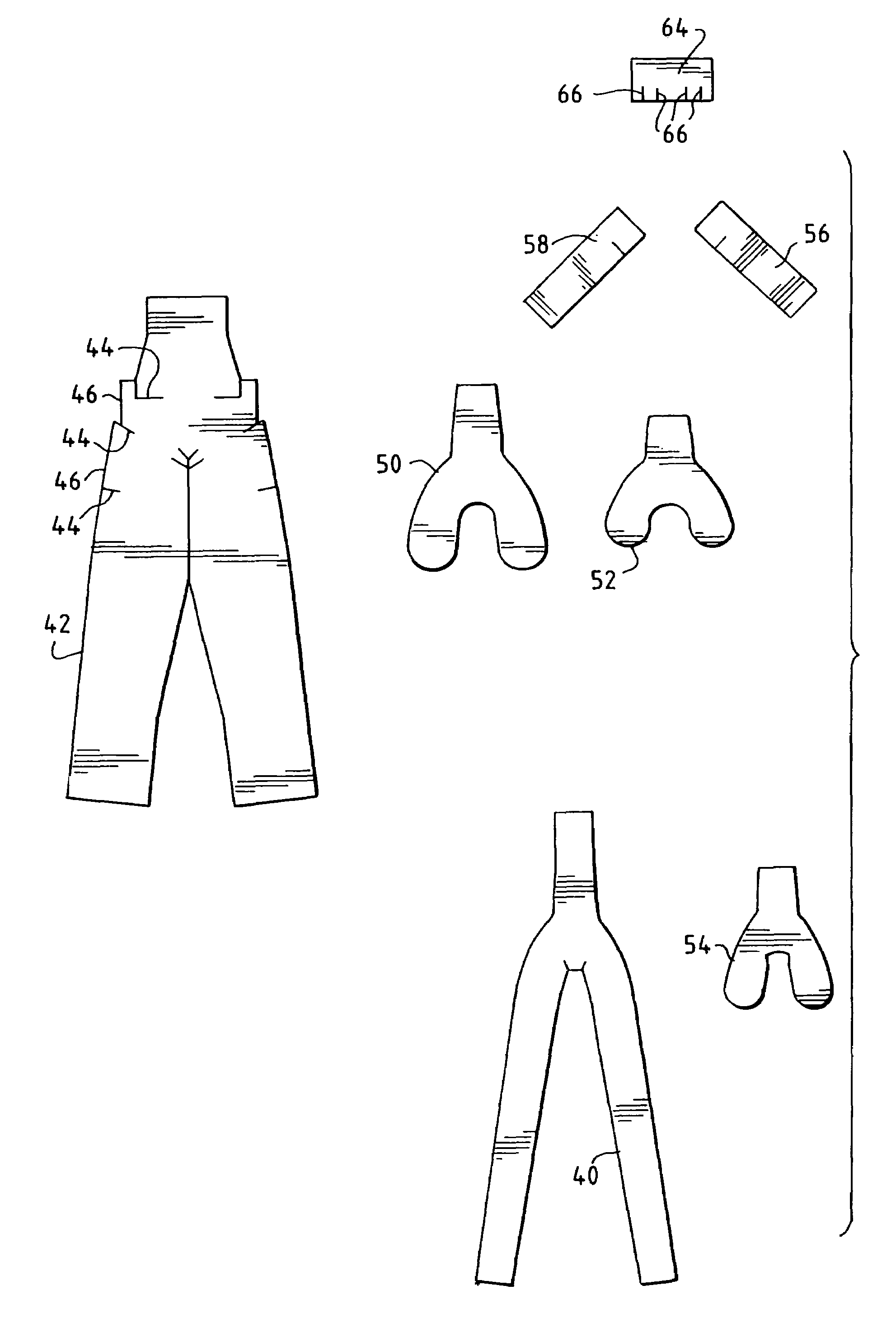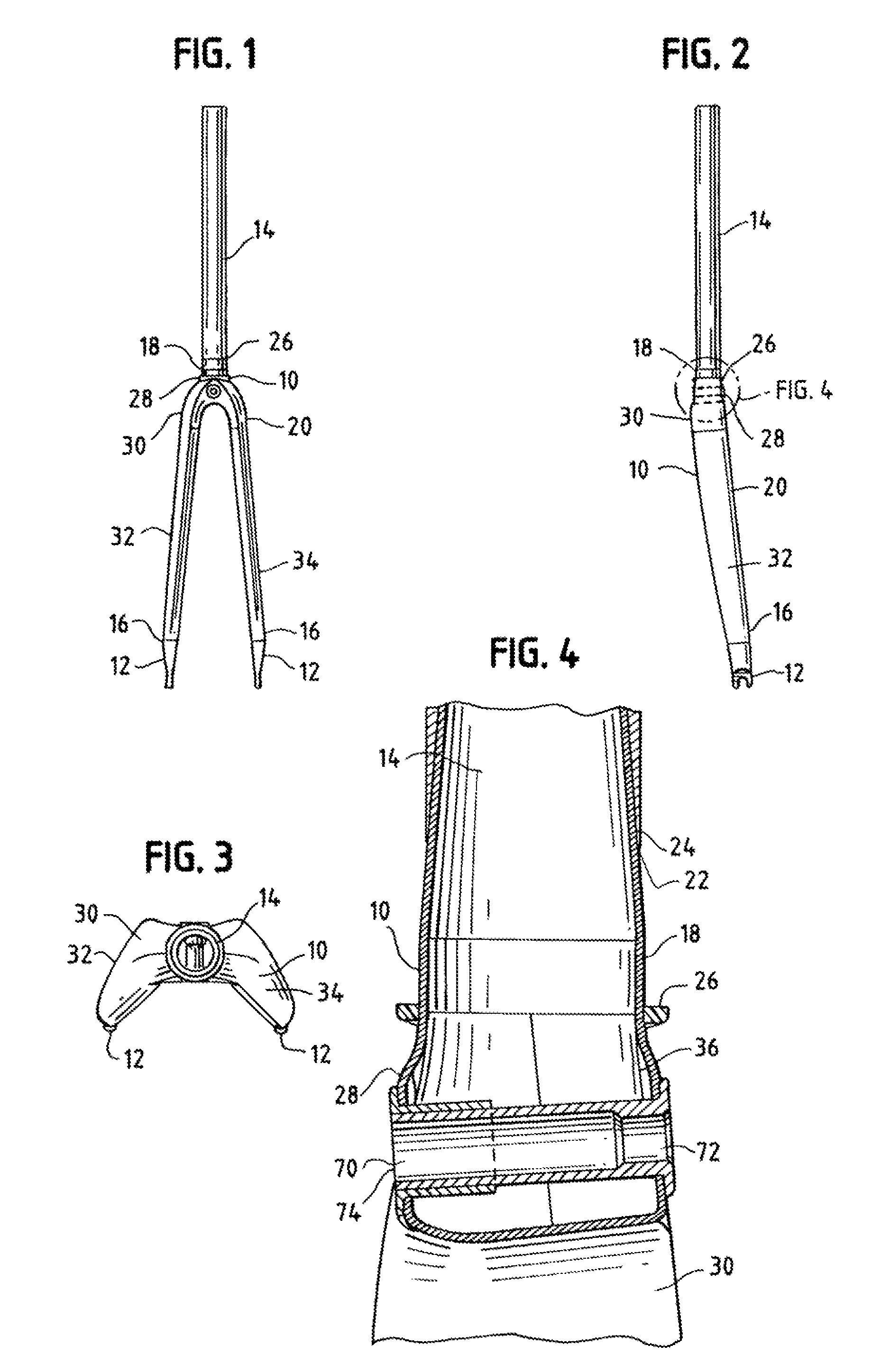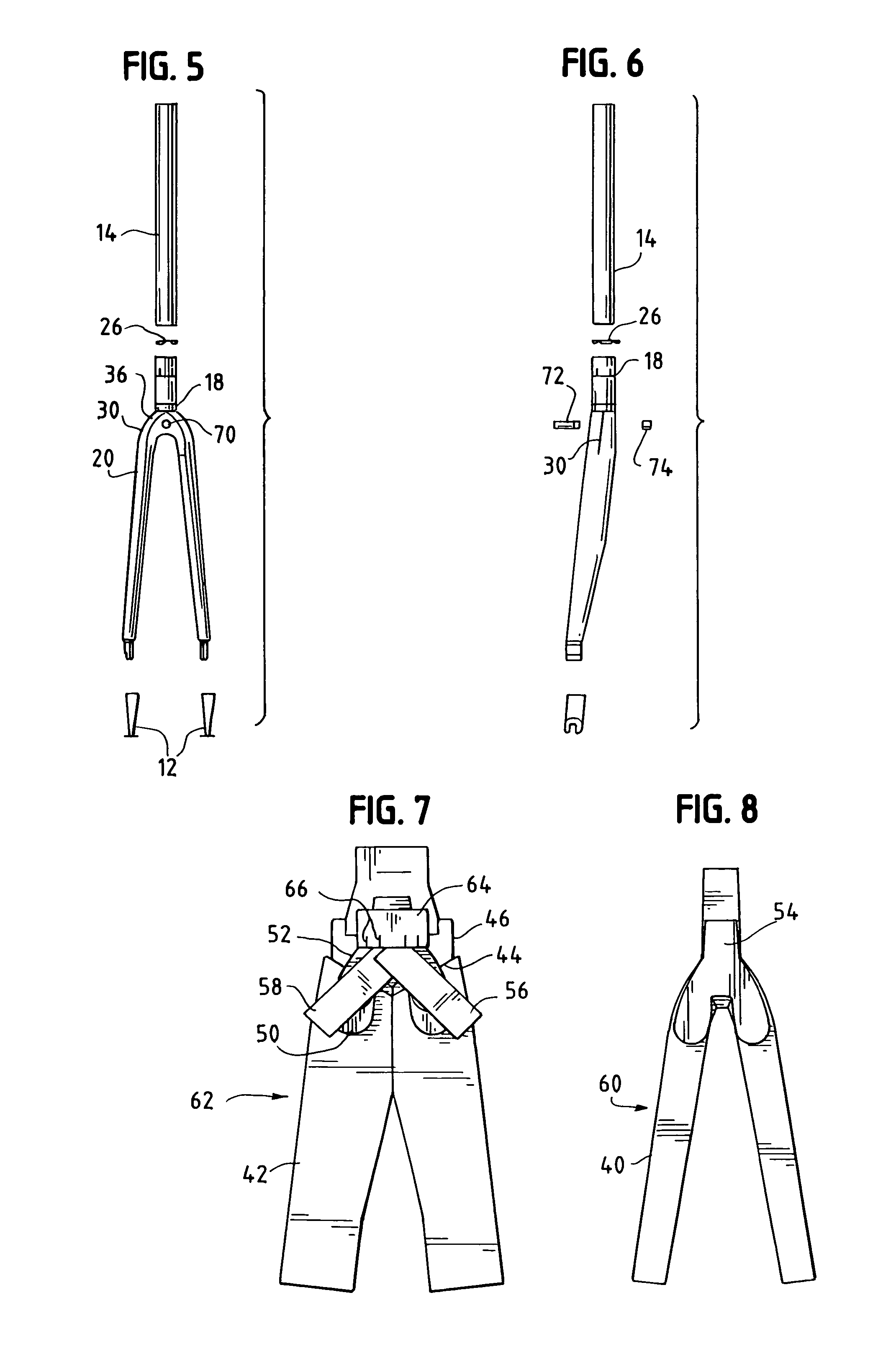Continuous fiber carbon fork
a technology of carbon fiber and fork, which is applied in the direction of friction roller based transmission, steering device, cycle equipment, etc., to achieve the effect of less strength reduction and adding to overall fork strength
- Summary
- Abstract
- Description
- Claims
- Application Information
AI Technical Summary
Benefits of technology
Problems solved by technology
Method used
Image
Examples
Embodiment Construction
[0025]The invention uses optimum compaction, low void molding, consistent with the teachings of Nelson U.S. Pat. No. 6,270,104 B1, of a completely hollow bicycle fork 10 with comolded dropouts 12 and a bonded steer tube 14. Continuous fibers in the fork extend from the tip 16 to steer tube base 18. The fiber reinforced plastic structure extending in this manner is referred to as the shell 20. Tube 14 is formed with a beveled bottom edge 22 which mates with a corresponding beveled top edge 24 of base 18. Beveled edges 22, 24 provide a gradual transition zone for the fiber reinforced plastic to metal joint thereby providing superior durability and predictability in strength properties as well as avoiding abrupt joints that result in stress concentrations. While aluminum is preferred for tube 14, other materials could be used such as steel or titanium. Additionally, should a carbon fiber tube be determined to be acceptable, a machine made tube using wound fibers could be economically b...
PUM
 Login to View More
Login to View More Abstract
Description
Claims
Application Information
 Login to View More
Login to View More - R&D Engineer
- R&D Manager
- IP Professional
- Industry Leading Data Capabilities
- Powerful AI technology
- Patent DNA Extraction
Browse by: Latest US Patents, China's latest patents, Technical Efficacy Thesaurus, Application Domain, Technology Topic, Popular Technical Reports.
© 2024 PatSnap. All rights reserved.Legal|Privacy policy|Modern Slavery Act Transparency Statement|Sitemap|About US| Contact US: help@patsnap.com










